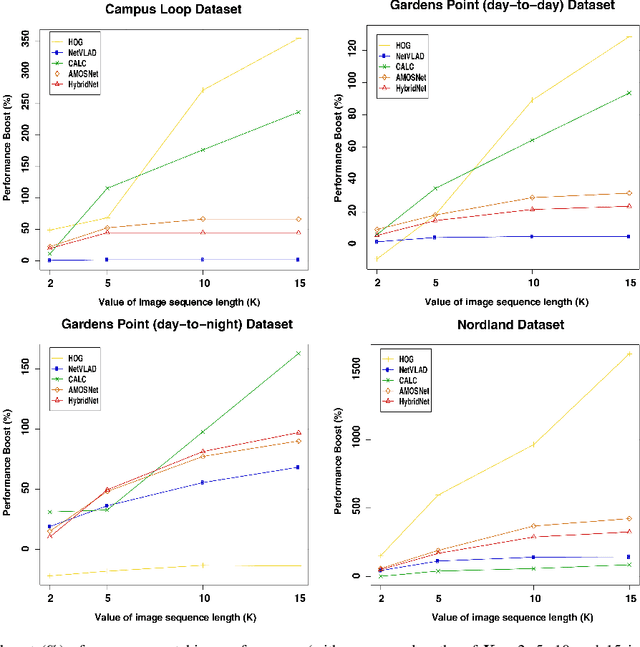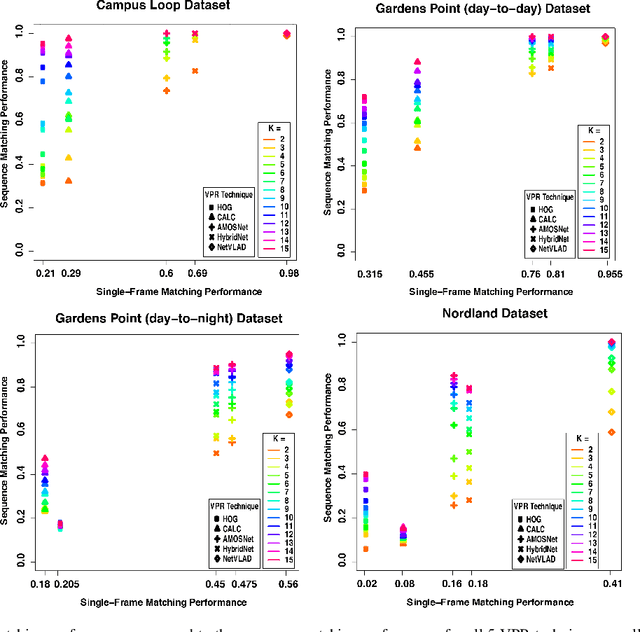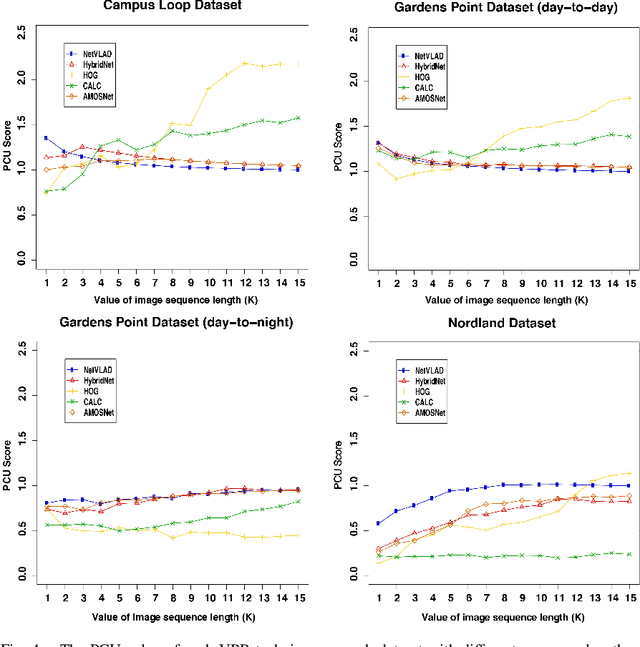Mihnea-Alexandru Tomită
Sequence-Based Filtering for Visual Route-Based Navigation: Analysing the Benefits, Trade-offs and Design Choices
Mar 02, 2021



Abstract:Visual Place Recognition (VPR) is the ability to correctly recall a previously visited place using visual information under environmental, viewpoint and appearance changes. An emerging trend in VPR is the use of sequence-based filtering methods on top of single-frame-based place matching techniques for route-based navigation. The combination leads to varying levels of potential place matching performance boosts at increased computational costs. This raises a number of interesting research questions: How does performance boost (due to sequential filtering) vary along the entire spectrum of single-frame-based matching methods? How does sequence matching length affect the performance curve? Which specific combinations provide a good trade-off between performance and computation? However, there is lack of previous work looking at these important questions and most of the sequence-based filtering work to date has been used without a systematic approach. To bridge this research gap, this paper conducts an in-depth investigation of the relationship between the performance of single-frame-based place matching techniques and the use of sequence-based filtering on top of those methods. It analyzes individual trade-offs, properties and limitations for different combinations of single-frame-based and sequential techniques. A number of state-of-the-art VPR methods and widely used public datasets are utilized to present the findings that contain a number of meaningful insights for the VPR community.
ConvSequential-SLAM: A Sequence-based, Training-less Visual Place Recognition Technique for Changing Environments
Sep 28, 2020



Abstract:Visual Place Recognition (VPR) is the ability to correctly recall a previously visited place under changing viewpoints and appearances. A large number of handcrafted and deep-learning-based VPR techniques exist, where the former suffer from appearance changes and the latter have significant computational needs. In this paper, we present a new handcrafted VPR technique that achieves state-of-the-art place matching performance under challenging conditions. Our technique combines the best of 2 existing trainingless VPR techniques, SeqSLAM and CoHOG, which are each robust to conditional and viewpoint changes, respectively. This blend, namely ConvSequential-SLAM, utilises sequential information and block-normalisation to handle appearance changes, while using regional-convolutional matching to achieve viewpoint-invariance. We analyse content-overlap in-between query frames to find a minimum sequence length, while also re-using the image entropy information for environment-based sequence length tuning. State-of-the-art performance is reported in contrast to 8 contemporary VPR techniques on 4 public datasets. Qualitative insights and an ablation study on sequence length are also provided.
 Add to Chrome
Add to Chrome Add to Firefox
Add to Firefox Add to Edge
Add to Edge